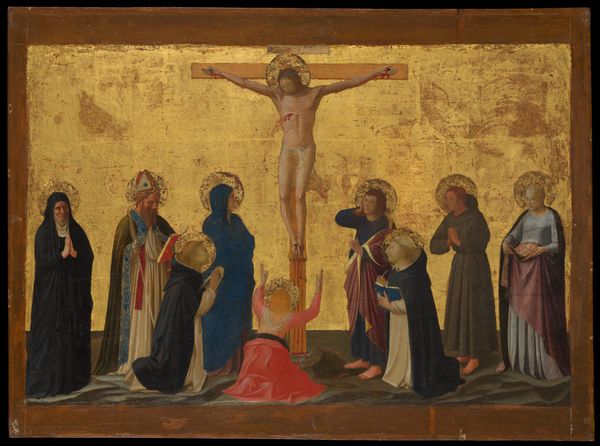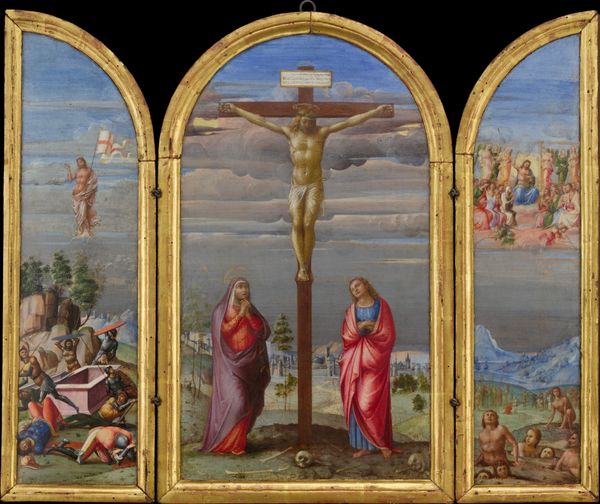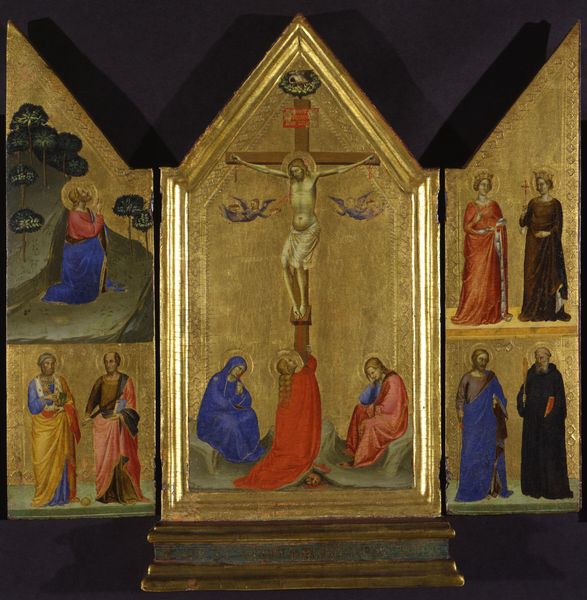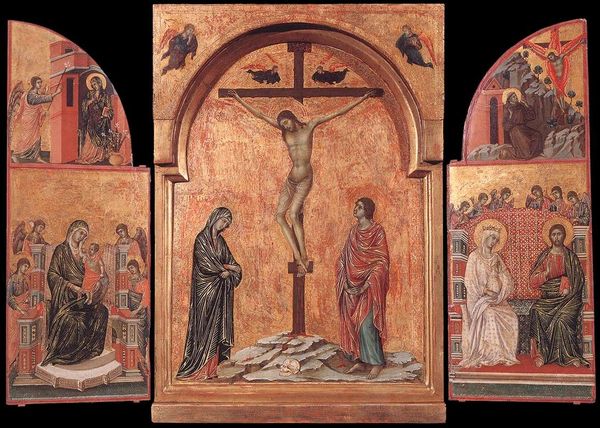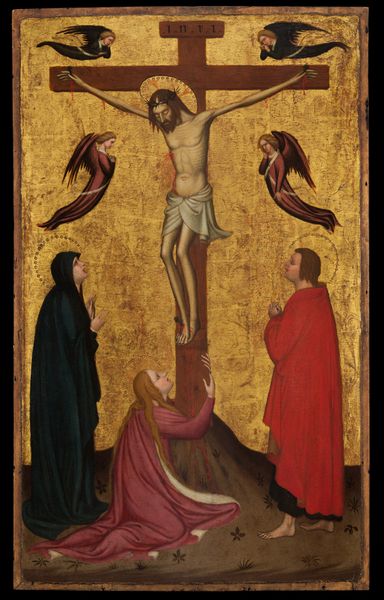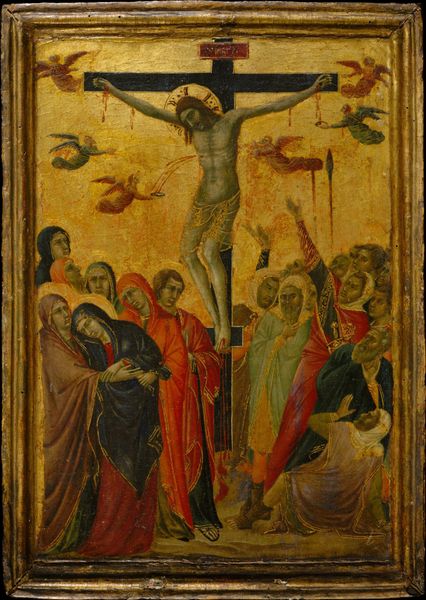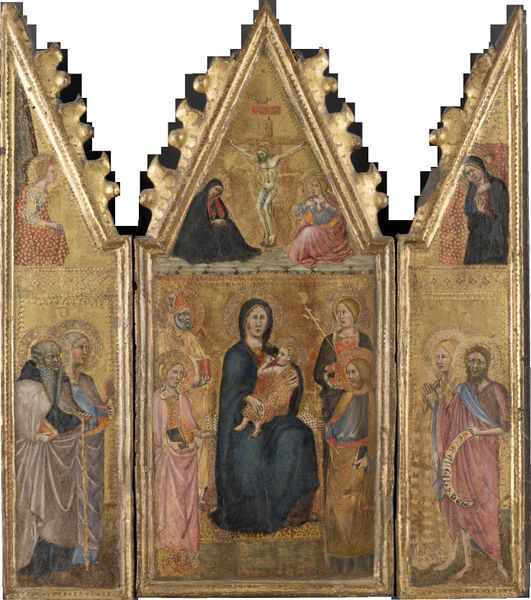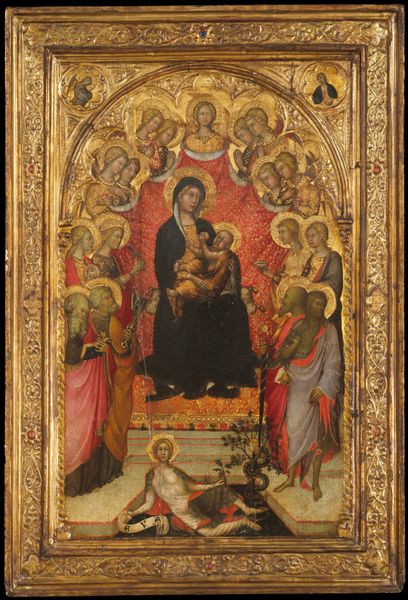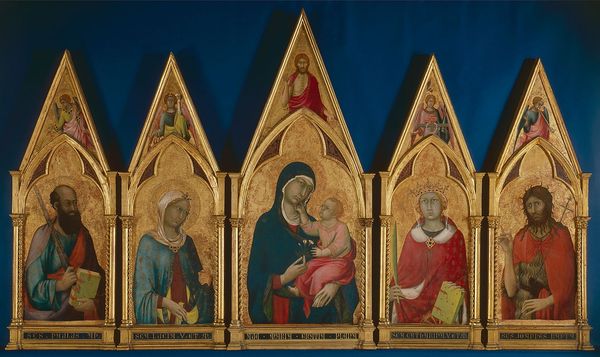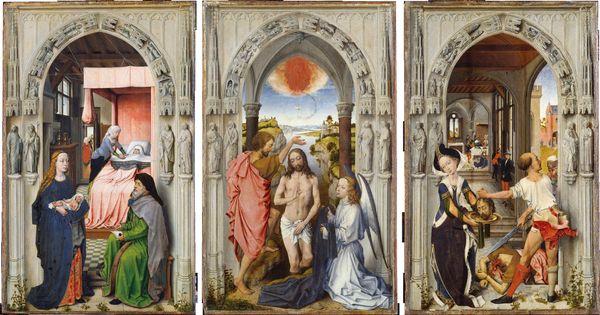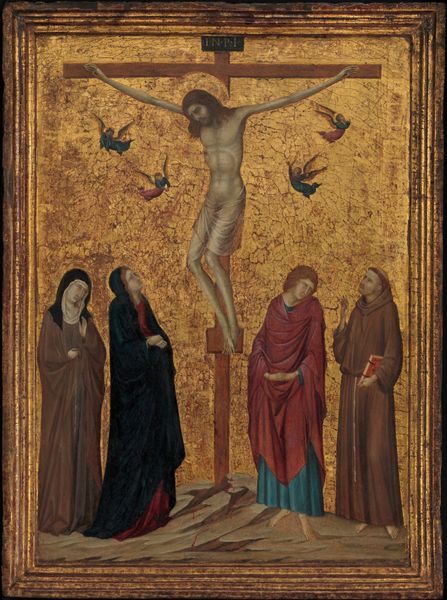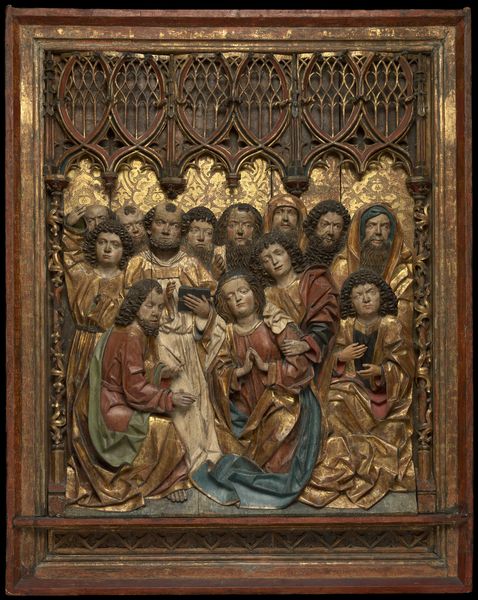
panel, tempera, painting
#
portrait
#
panel
#
tempera
#
painting
#
figuration
#
madonna
#
child
#
men
#
crucifixion
#
history-painting
#
italian-renaissance
#
early-renaissance
#
angel
#
christ
Dimensions: Shaped top, central panel, overall, with engaged frame, 18 x 11 in. (45.7 x 27.9 cm); central panel, painted surface 16 1/2 x 9 1/2 in. (41.9 x 24.1 cm); left wing, overall, with engaged frame, 18 x 5 5/8 in. (45.7 x 14.3 cm); left wing, painted surface 16 1/2 x 4 1/4 in. (41.9 x 10.8 cm); right wing, overall, with engaged frame, 18 x 5 1/4 in. (45.7 x 13.3 cm); right wing, painted surface 16 1/2 x 3 3/4 in. (41.9 x 9.5 cm)
Copyright: Public Domain
This small triptych, made in the 1420s, by Paolo Uccello, presents a traditional scene of the crucifixion on three panels. The overwhelming sensation is of gold. It fills the background space and draws the eye around the composition. Uccello uses line to divide the panels and create depth, yet this is undermined by the flatness of the gold, which asserts the painting's surface. The figures, set against this shimmering backdrop, seem to float, caught between the earthly and the divine. Look closely and you will see the three panels are not unified by one coherent perspectival system. Instead, each scene operates according to its own logic. This challenges the viewer’s spatial expectations and destabilizes the narrative. Through its interplay of line, color, and spatial ambiguity, Uccello’s *Crucifixion* invites us to consider how formal elements contribute to the construction—and deconstruction—of meaning. Its lasting impact resides not only in its devotional subject matter but also in its innovative approach to the pictorial space.
Comments
No comments
Be the first to comment and join the conversation on the ultimate creative platform.
